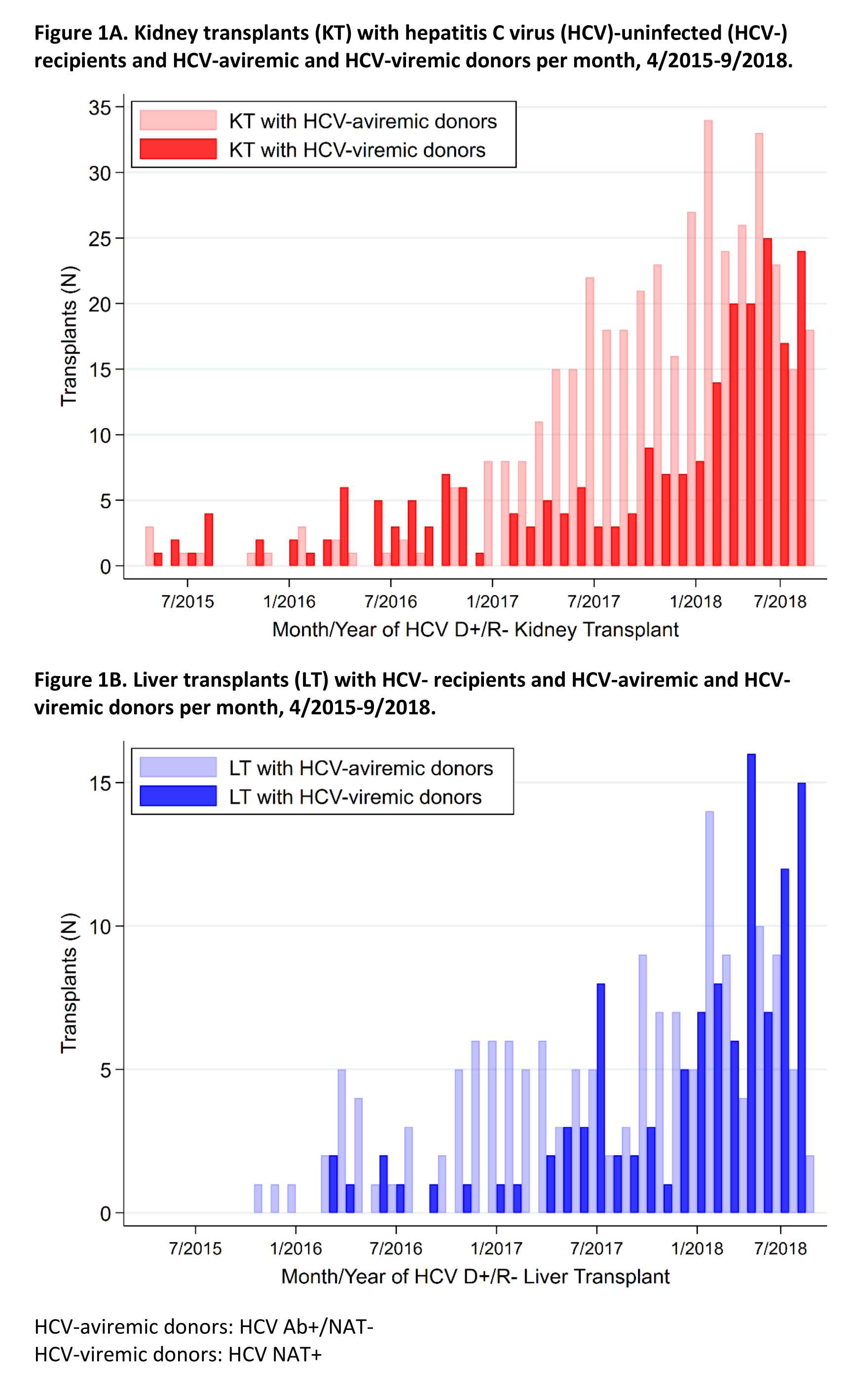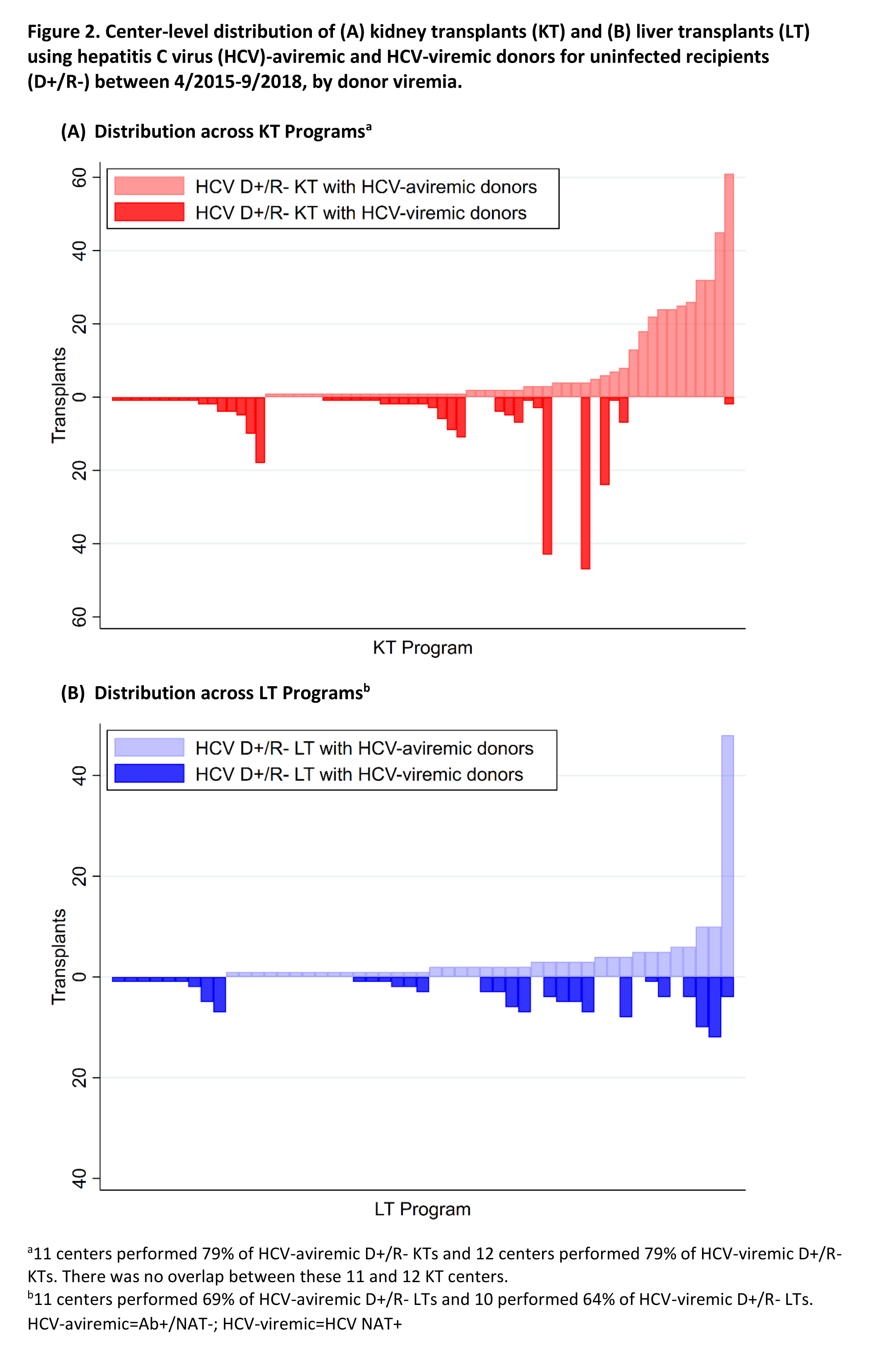Rapid Growth of HCV-Infected Donors for HCV-Uninfected Kidney and Liver Transplant Recipients in the United States
M. Bowring, A. Shaffer, A. Massie, N. Desai, M. Sulkowski, A. Cameron, J. Garonzik-Wang, D. Segev
Johns Hopkins University, Baltimore, MD
Meeting: 2019 American Transplant Congress
Abstract number: 589
Keywords: Hepatitis C, Kidney/liver transplantation
Session Information
Session Name: Concurrent Session: Non-Organ Specific: Viral Hepatitis
Session Type: Concurrent Session
Date: Tuesday, June 4, 2019
Session Time: 4:30pm-6:00pm
 Presentation Time: 5:18pm-5:30pm
Presentation Time: 5:18pm-5:30pm
Location: Room 309
*Purpose: Several single-center reports of using HCV-viremic organs for HCV-uninfected recipients were recently published in the US. In light of recent DAA introduction, we sought to characterize temporal changes in national utilization of HCV-exposed donors for HCV-uninfected recipients (HCV D+/R-) in kidney transplantation (KT) and liver transplantation (LT).
*Methods: We used SRTR data (4/1/2015-9/2/2018) and Gini coefficients to study program-level clustering of 916 HCV D+/R- KTs and LTs. A Gini coefficient near 1.0 indicates that only a few programs performed a large share the transplants, while one closer to 0 indicates less program-level clustering. For perspective, the Gini coefficient for all DDKTs is 0.36.
*Results: HCV-viremic (NAT+) D+/R- KTs increased from 1/month in 2015 to 17/month in 2018 (LTs from 0/month to 9/month). HCV-aviremic (Ab+/NAT-) D+/R- KTs increased from 1/month in 2015 to 25/month in 2018 (LTs from <1/month to 7/month) (Figure 1).
HCV D+/R- recipients of viremic and aviremic kidneys spent a median (IQR) of 0.6 (0.2-1.5) and 1.4 (0.4-3.5) years on the waitlist versus 1.9 (0.5-3.9) years among HCV D-/R- recipients. HCV D+/R- recipients of viremic and aviremic livers had median (IQR) MELD scores of 24 (19-31) and 25 (20-31) at transplantation versus 29 (23-36) among HCV D-/R- recipients.
HCV D+/R- KTs were highly clustered among a small group of centers: 12 and 11 KT programs performed 79% and 79% of all HCV-viremic and HCV-aviremic KTs (Gini coefficients=0.92 and 0.93, respectively) (Figure 2A). Similarly, 10 and 11 LT programs performed 64% and 69% of all HCV-viremic and HCV-aviremic LTs (Gini coefficients=0.85 for both) (Figure 2B).
*Conclusions: While few programs have adopted these strategies, the striking increases in HCV-infected donors for HCV-uninfected recipients indicates clear dedication to expansion of the donor pool despite infectious risk.
To cite this abstract in AMA style:
Bowring M, Shaffer A, Massie A, Desai N, Sulkowski M, Cameron A, Garonzik-Wang J, Segev D. Rapid Growth of HCV-Infected Donors for HCV-Uninfected Kidney and Liver Transplant Recipients in the United States [abstract]. Am J Transplant. 2019; 19 (suppl 3). https://atcmeetingabstracts.com/abstract/rapid-growth-of-hcv-infected-donors-for-hcv-uninfected-kidney-and-liver-transplant-recipients-in-the-united-states/. Accessed December 19, 2025.« Back to 2019 American Transplant Congress


